Elias 2-27 is a young star located just 378 light-years from Earth. The star is host to a massive protoplanetary disk of gas and dust, one of the key elements to planet formation. In this graphic illustration, dust is distributed along a spiral-shaped morphology first discovered in Elias 2-27 in 2016. The larger dust grains are found along the spiral arms while the smaller dust grains are distributed all around the protoplanetary disk. Asymmetric inflows of gas were also detected during the study, indicating that there may still be material infalling into the disk. Scientists believe that Elias 2-27 may eventually evolve into a planetary system, with gravitational instabilities causing the formation of giant planets. Because this process takes millions of years to occur, scientists can only observe the beginning stages.
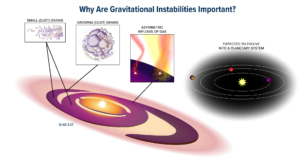
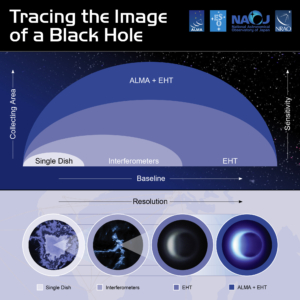
Tracing the Image of a Black Hole – EHT and ALMA
This infographic illustrates how ALMA contributes to the EHT observations. With its shorter baseline, ALMA is sensitive to larger scales than the EHT and so ALMA can fill in the lower-resolution, larger-scale structures that the EHT misses.

The Event Horizon Telescope – A Global Network of Radio Telescopes
Diagram of the EHT Network used for the observations in 2017.
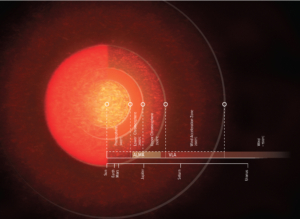
Artist illustration of Antares’ Atmosphere
Artist impression of the atmosphere of Antares. As seen with the naked eye (up until the photosphere), Antares is around 700 times larger than our sun, big enough to fill the solar system beyond the orbit of Mars (Solar System scale shown for comparison). But ALMA and VLA showed that its atmosphere, including the lower and upper chromosphere and wind zones, reaches out 12 times farther than that.
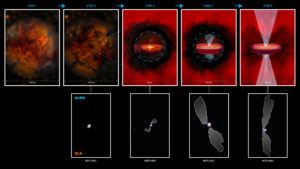
The formation of protostars
This schematic shows a proposed pathway (top row) for the formation of protostars, based on four very young protostars (bottom row) observed by VLA (orange) and ALMA (blue). Step 1 represents the collapsing fragment of gas and dust. In step 2, an opaque region starts to form in the cloud. In step 3, a hydrostatic core starts to form due to an increase in pressure and temperature, surrounded by a disk-like structure and the beginning of an outflow. Step 4 depicts the formation of a class 0 protostar inside the opaque region, that may have a rotationally supported disk and more well-defined outflows. Step 5 is a typical class 0 protostar with outflows that have broken through the envelope (making it optically visible), an actively accreting, rotationally supported disk. In the bottom row, white contours are the protostar outflows as seen with ALMA.
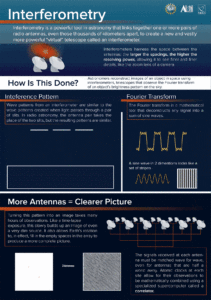
Animated Interferometry Infographic
Infographic depicting interferometry and the concepts that make it work.





